 Melissa Anderson
Melissa Anderson
For those who come to San Francisco . . . David Schickele’s docufiction portrayal of a young Nigerian, a city, and an epoch.
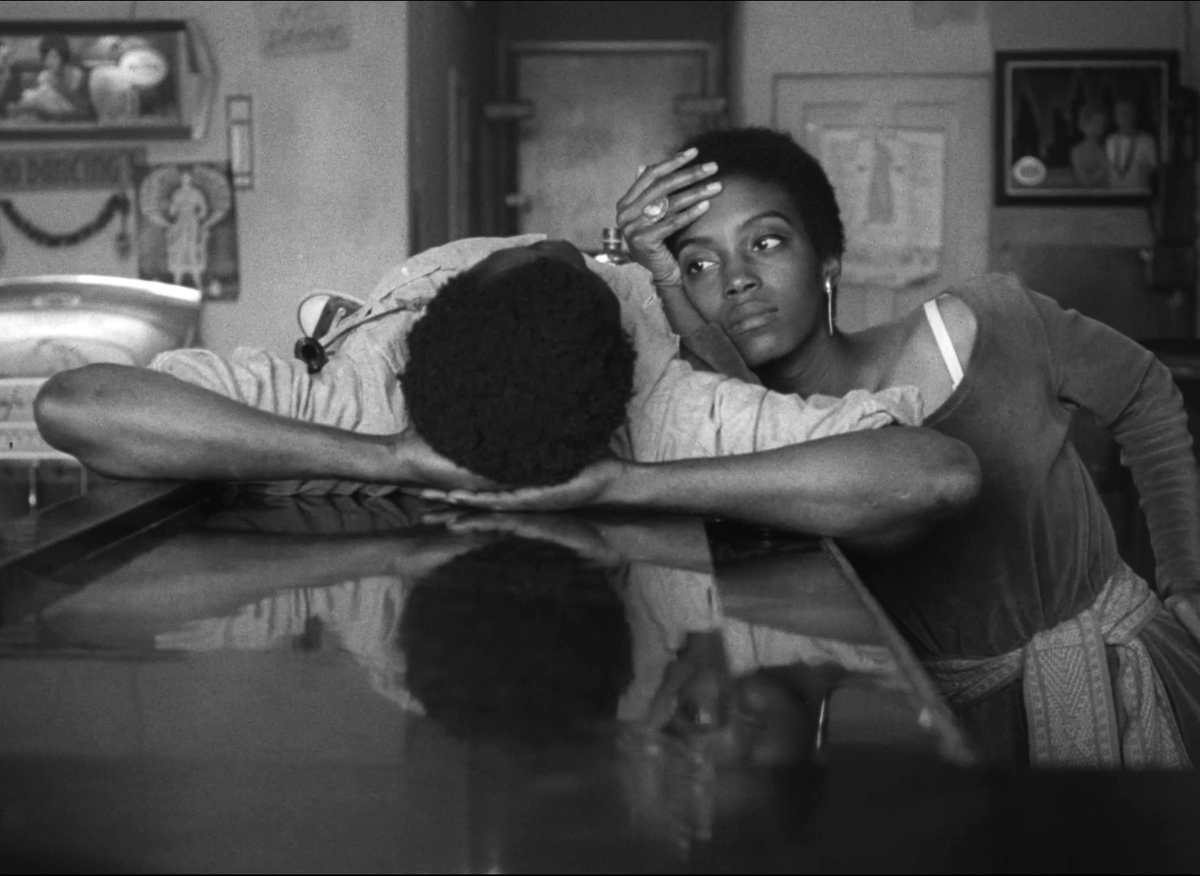
Paul Eyam Nzie Okpokam as Gabriel and Elaine Featherstone as Alma in Bushman. Courtesy Kino Lorber.
Bushman, directed by David Schickele, now playing through February 8, 2024 at Brooklyn Academy of Music, 30 Lafayette Avenue, Brooklyn
• • •
Among that seismic year’s many enduring legacies, 1968 produced a vast array of cinema that not only captured the near daily upheavals happening in the world but did so by using formal strategies that were constantly shape-shifting. Traditional boundaries between categories, such as the lines separating narrative from documentary, were destabilized. Brutal fact collided with fiction. In American films shot during that tumultuous time, the best-known example of real life ripping through the fabric of a scripted story occurs in Haskell Wexler’s Medium Cool. Taking place in Chicago, the host city of the Democratic National Convention in ’68—an event that would be infamously marked by police brutality—the film tracks the growing disgruntlement of Second City TV-news cameraman John Cassellis (played by Robert Forster), who takes a freelance assignment covering the DNC. A movie that consistently interrogates the power of wielding a camera, Medium Cool makes its most searing impression during its most frantic moment: Eileen (Verna Bloom), the latest of roué John’s love interests, is searching for her son in Grant Park, soon becoming part of the actual, bloody chaos that erupts as the Chicago PD attacks Yippies and other protestors.
Released by Paramount Pictures the following year, Medium Cool was a critical and commercial success. It is considered a foundational work of New Hollywood. But another film shot in the US in ’68 (with an epilogue set three year later) that’s even more formally audacious in its interplay of fiction and fact never received a theatrical run and languished for more than a half a century. I am chagrined to admit that until just a few months ago, I had never even heard of David Schickele’s extraordinary Bushman, which has recently been restored and will have a weeklong run at BAM in addition to other engagements in North American cities. An elegant, protean portrait of its main character, a Nigerian in San Francisco who plays a heightened version of himself, Bushman is also an astute examination of place, immigration, racism, blinkered liberals, and the inevitability of outrageous state-sanctioned violence in that convulsive epoch.
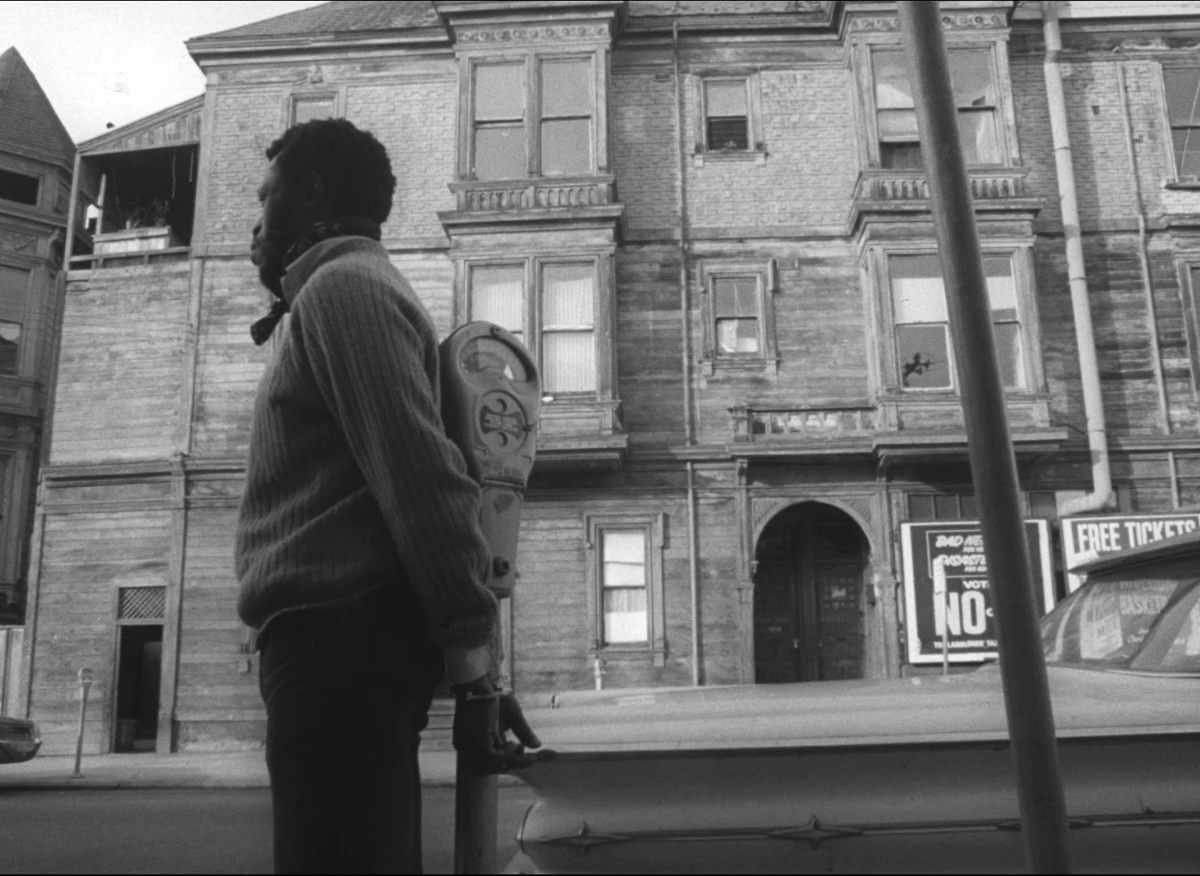
Paul Eyam Nzie Okpokam as Gabriel in Bushman. Courtesy Kino Lorber.
These heavy themes are handled wryly, sometimes ruefully. When the film begins, geographical location is at first ambiguous but still striking. We see a young Black man walking barefoot on a deserted stretch of highway, his sneakers balanced on his head. Audio cues add to the disorientation: on the soundtrack, tribal percussion soon segues to classical harpsichord and back again. After the man puts out his thumb to hitch a ride—we soon learn he’s on the outskirts of San Francisco—onscreen text bluntly lays out the grim political reality stateside: “1968 Martin Luther King, Robert Kennedy, Bobby Hutton are among the recent dead.” In the next scene, we’re on the other side of the world, following two children on a dirt path. The text that accompanies this segment is equally dire: “In Nigeria the Civil War is entering its second year with no end in sight.”
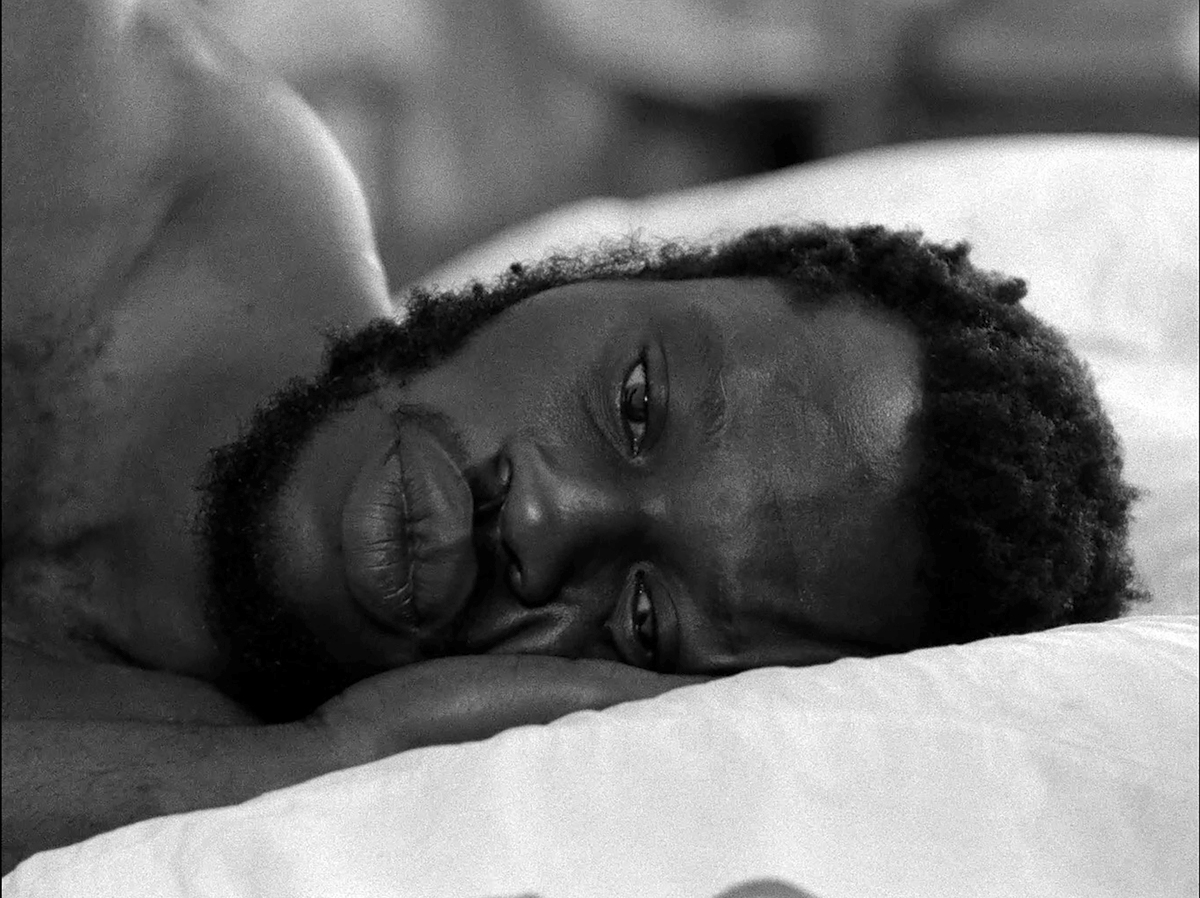
Paul Eyam Nzie Okpokam as Gabriel in Bushman. Courtesy Kino Lorber.
The hitchhiker is named Gabriel, and he is played by Paul Eyam Nzie Okpokam, a former student of Schickele’s during the filmmaker’s stint teaching English as a Peace Corps volunteer in the early ’60s at the University of Nigeria in Nsukka. In 1966, Schickele returned to Nigeria to make Give Me a Riddle, a documentary about his experience in the US program, featuring Okpokam, an occasional performer and effortlessly charismatic screen presence. Schickele described Riddle as “a document of an American’s relation to his African friends and their Africa”; Bushman was envisioned as its sequel, “about an African in America.” By the time Bushman began filming in ’68, Okpokam had been in the US for at least a year, first in Boston as an instructor at a Peace Corps training program before heading west to begin a master’s program in drama at San Francisco State College, where he was also to teach a course on African literature.

Paul Eyam Nzie Okpokam as Gabriel in Bushman. Courtesy Kino Lorber.
The script for Bushman, shot on a minuscule budget, was largely informed by Okpokam’s experiences in this country; thanks to this spirit of collaboration and the yearslong friendship between the (white) man filming and the (Black) man being filmed, Schickele’s project quickly establishes Gabriel/Okpokam as a multifaceted subject, not an object of the camera’s queasy fascination. Inserted throughout the narrative detailing Gabriel’s day-to-day concerns—romantic entanglements, money worries now that his Peace Corps teaching gig has ended, culture clashes, anxiety about the war back home—are nonfiction segments of Okpokam, seated on a couch. He amiably recounts his life in Nigeria, both before and after the nation’s independence in 1960, his recollections sometimes accompanied by footage that Schickele shot while making Give Me a Riddle.
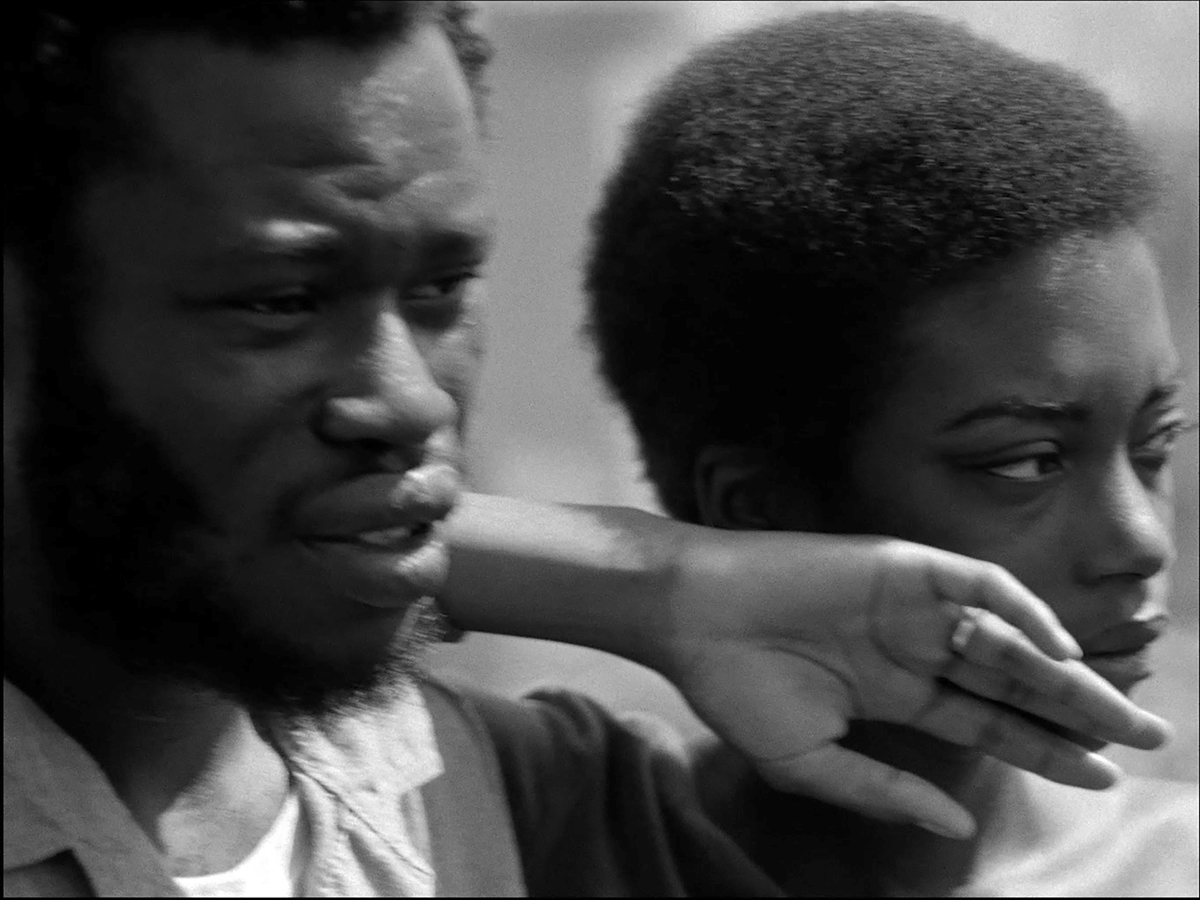
Paul Eyam Nzie Okpokam as Gabriel and Elaine Featherstone as Alma in Bushman. Courtesy Kino Lorber.
Okpokam’s past is continuously in conversation with Gabriel’s present, giving us a richer, fuller picture of one young man and his avatar. Bushman also vivifies the city of San Francisco itself, which just the year before had been the epicenter of the Aquarian Age, becoming a media spectacle owing to the outsize attention paid to the hippie masses making the hegira to Haight-Ashbury. Love beads are barely in evidence in Bushman, a significant portion of which was filmed in Fillmore, then a largely African American neighborhood and cultural hub once known as the Harlem of the West. Here Gabriel spends one last day with his sort-of girlfriend, Alma (Elaine Featherstone), who razzes him for his inability to “talk Black” before she returns to her hometown of Watts.
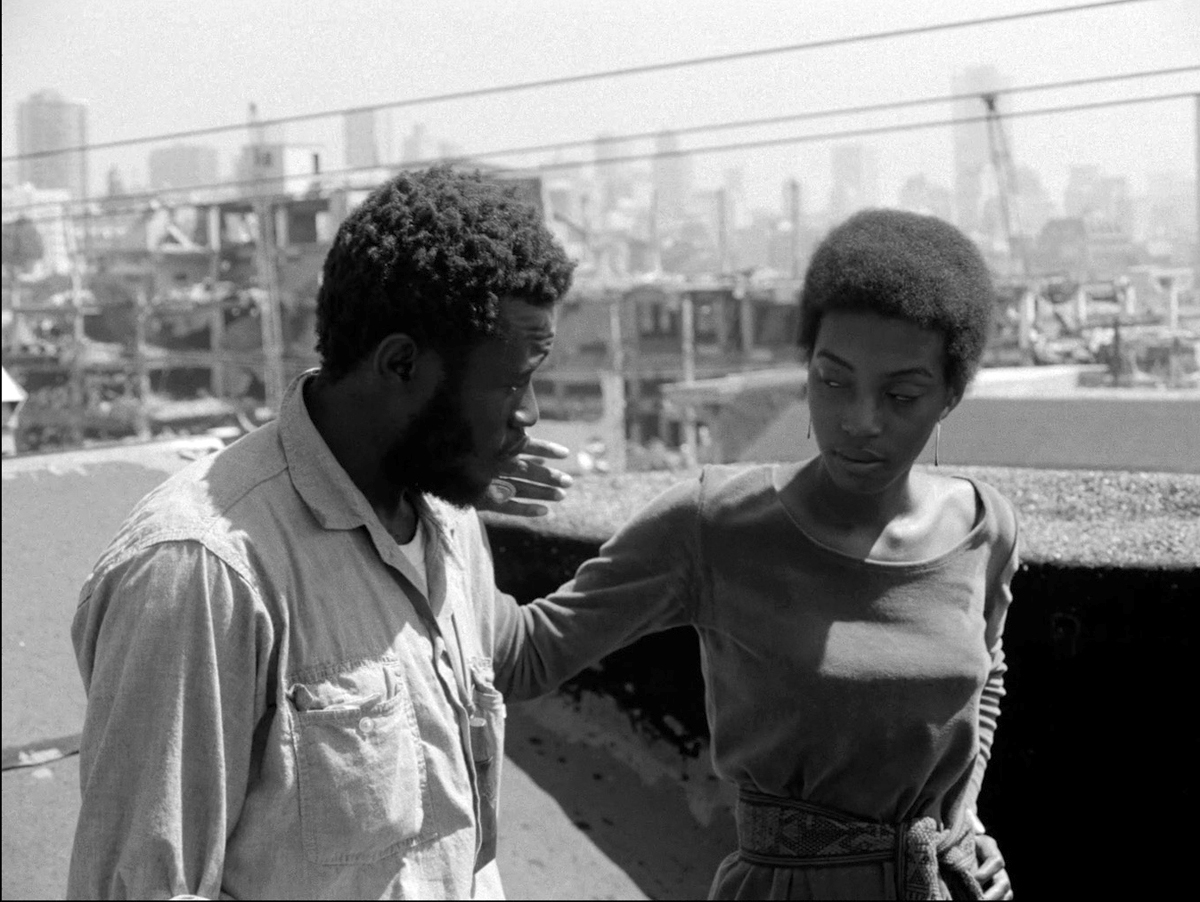
Paul Eyam Nzie Okpokam as Gabriel and Elaine Featherstone as Alma in Bushman. Courtesy Kino Lorber.
With Alma gone, with no job, and with his visa about to expire, Gabriel is largely adrift, spending his days traversing SF. On his wanders he encounters a blonde sociology student, her patronizing admiration for Gabriel as a “natural man” as idiotic as the remarks of the guy driving a tricked-out chopper who gives him a lift in the first scene. Learning where the hitchhiker comes from, the motorcyclist makes fatuous comments about “bouncing boobs” and the “mumbo jumbo” spoken in Africa.
In conversation with his friend Mark (played by Schickele), Gabriel discusses the perplexing ways he’s been perceived by Black and white Americans—and by the police. “The cops don’t bother me. It’s like walking around with an invisible magic robe on. I open my mouth and they say, ‘Yeah, that’s a foreigner,’ ” he explains. But he knows that the “protection” afforded by this tenuous, capricious status has an expiration date: “Someday they won’t listen to my accent or see my magic robe.”
Those words turn out to be prophetic. Baleful truth intervenes, derailing Okpokam’s life and Schickele’s movie. But the filmmaker cannily incorporates this violent rupture, catalyzed by the police force’s overreaction to the student strike begun in November ’68 at San Francisco State College. In addition to detailing how that response imperiled Okpokam, Schickele includes footage of the campus unrest, with cops pounding billy clubs against human skulls. A similar paroxysm of savagery occurs in Medium Cool. We’re a long way from ’68. The pummeling has never stopped.
Melissa Anderson is the film editor of 4Columns and the author of a monograph on David Lynch’s Inland Empire from Fireflies Press.